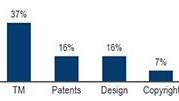EPO publishes report on life-saving mRNA technologies
Today, the European Patent Office (EPO) published a new patent insight report on mRNA technologies. The report summarises the results of patent analyses in the field of mRNA-based vaccines, which helped save millions of lives during the COVID-19 pandemic. Yet as the report shows, the number of inventions in this particularly dynamic sub-area of mRNA technologies started to multiply long before the pandemic began, and saw significantly higher growth compared to all fields of technology combined over the past decade.
The topicality of the report is underlined by its publication shortly after this year’s Nobel Prize in Physiology or Medicine was awarded to two leading researchers in the mRNA field: Katalin Karikó, who also won the Lifetime Achievement category at the European Inventor Award in 2022, and her colleague Drew Weissman. From the 1990s onwards, their work greatly enhanced our understanding of mRNA and was also crucial in developing effective COVID-19 mRNA vaccines.
Using publicly available patent information, the report provides an overview of developments in the field of mRNA-based vaccines.
- Although these vaccines rose to prominence during the COVID-19 pandemic, an upswing in filings occurred as early as the 1990s.
- Innovators in this field focus on the following patent application routes: international (PCT), United States, Europe, Australia, Canada, China and Japan. The above-average share of PCT applications suggests high economic expectations for these technologies and multinational commercialisation strategies.
- Companies and universities from the United States, Europe and China are among the most active patent applicants. The percentage of European applicants is higher than for other emerging technologies, such as quantum technologies.

Figure 1: Number of international patent families, as a proxy for inventions with high economic expectations, per earliest publication year.
While the number of inventions in all technical fields tends to continuously increase (grey - right scale), the recent growth in mRNA-based vaccines is far above average (red - left scale). There are no signs that developments in mRNA technologies, and particularly in mRNA vaccines, will lose momentum in the years ahead as society grapples with global challenges such as viruses, bacteria, malaria and cancer.
What are mRNA technologies?
mRNA, or messenger ribonucleic acid, is an indispensable molecule in the clockwork of human and other cells. In the cell, RNA is made from a DNA template during the process of transcription and mediates the transfer of genetic information from the cell nucleus to the cytoplasm, where the information is translated into proteins by ribosomes and tRNA (transfer RNA). Proteins are crucial in human and animal organisms and contribute to the growth, maintenance and structure of tissues, to biochemical processes in the body as enzymes, to cell signalling and the immune system. mRNA technologies build on tailored mRNA to trigger cells to produce specific proteins, which may be useful in multiple medical applications. There is growing potential for mRNA-based drugs to address a wide range of diseases, from genetic and infectious diseases to various forms of cancer.













